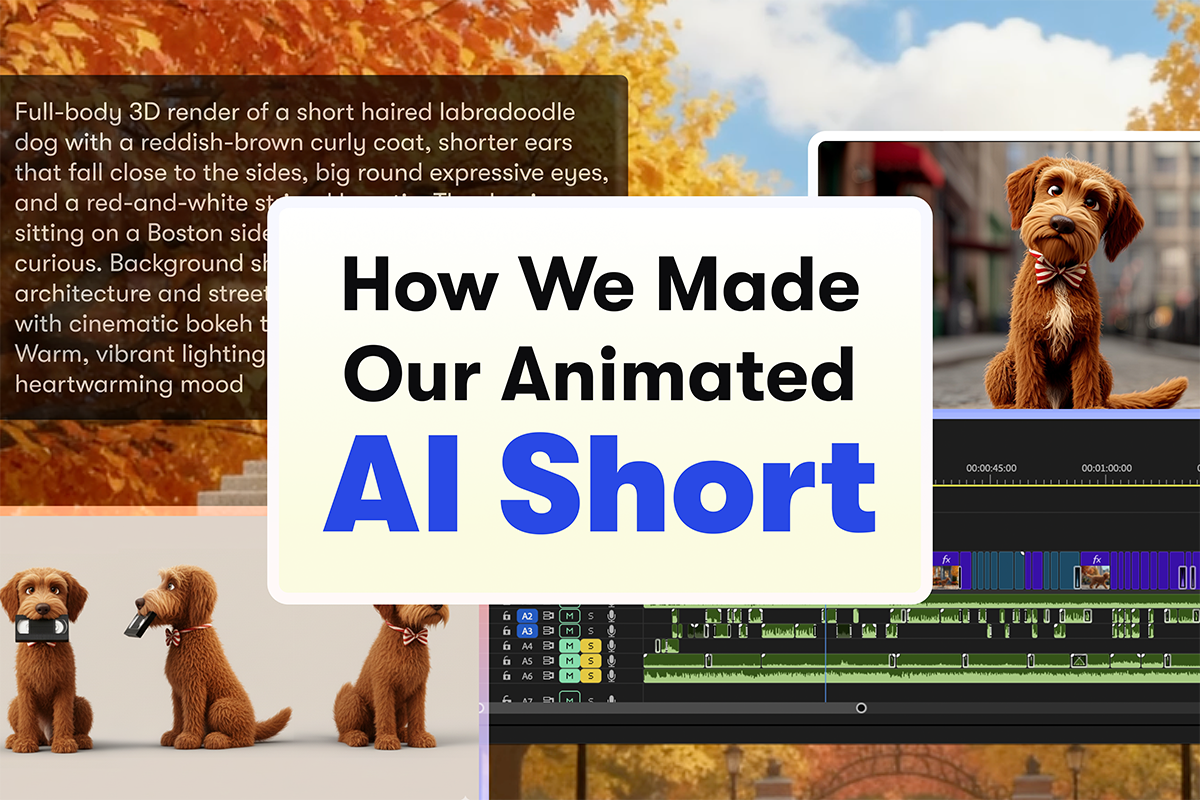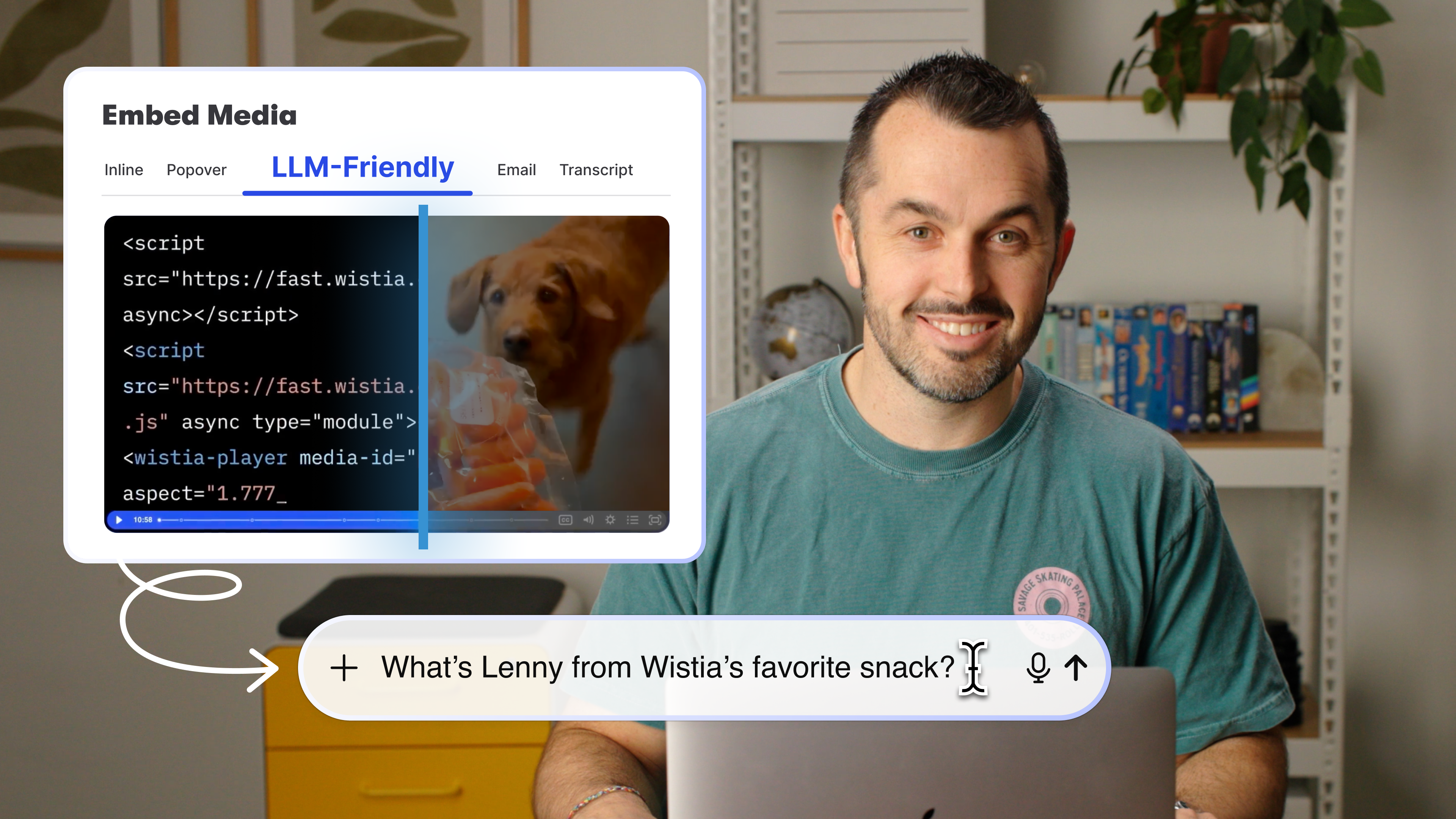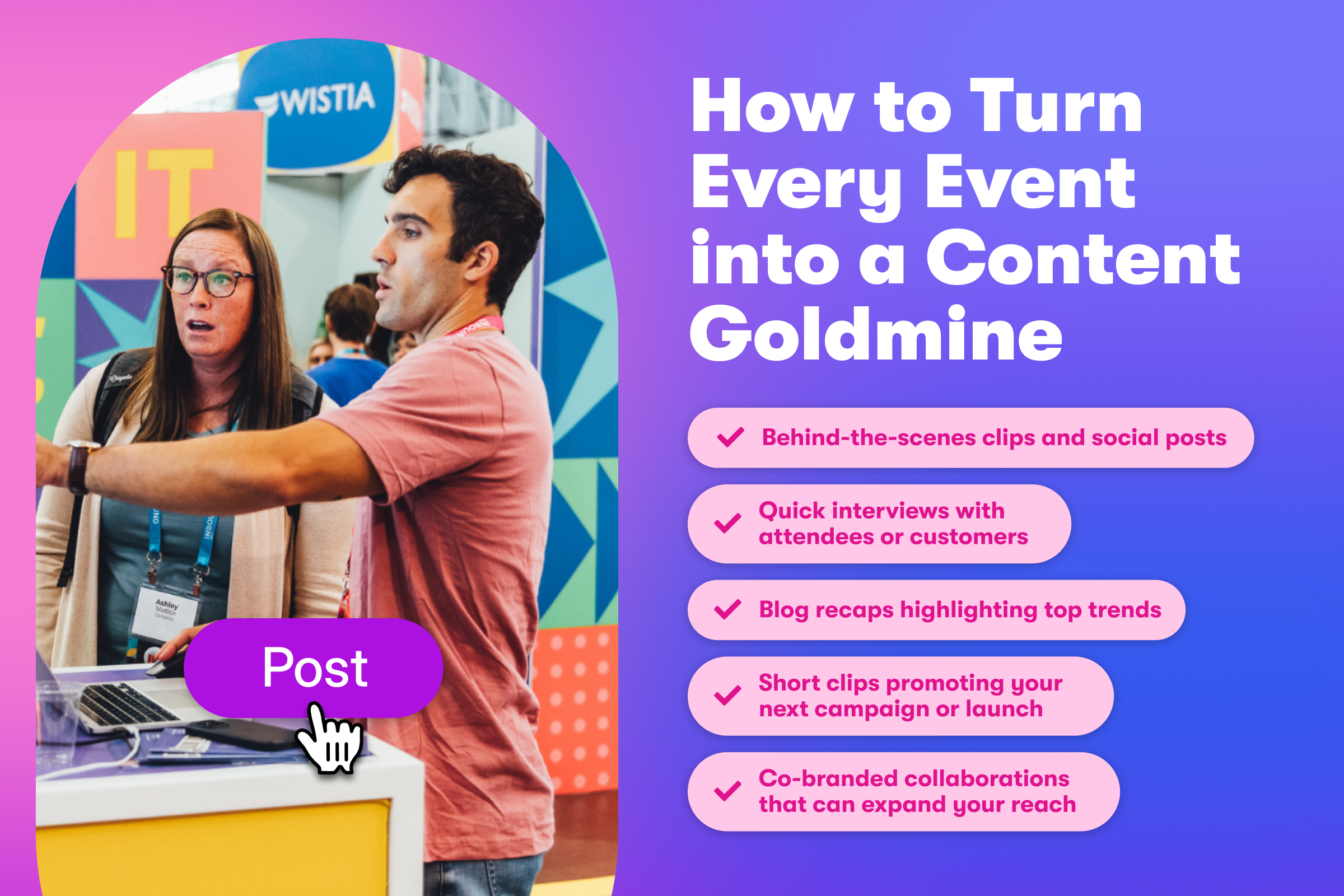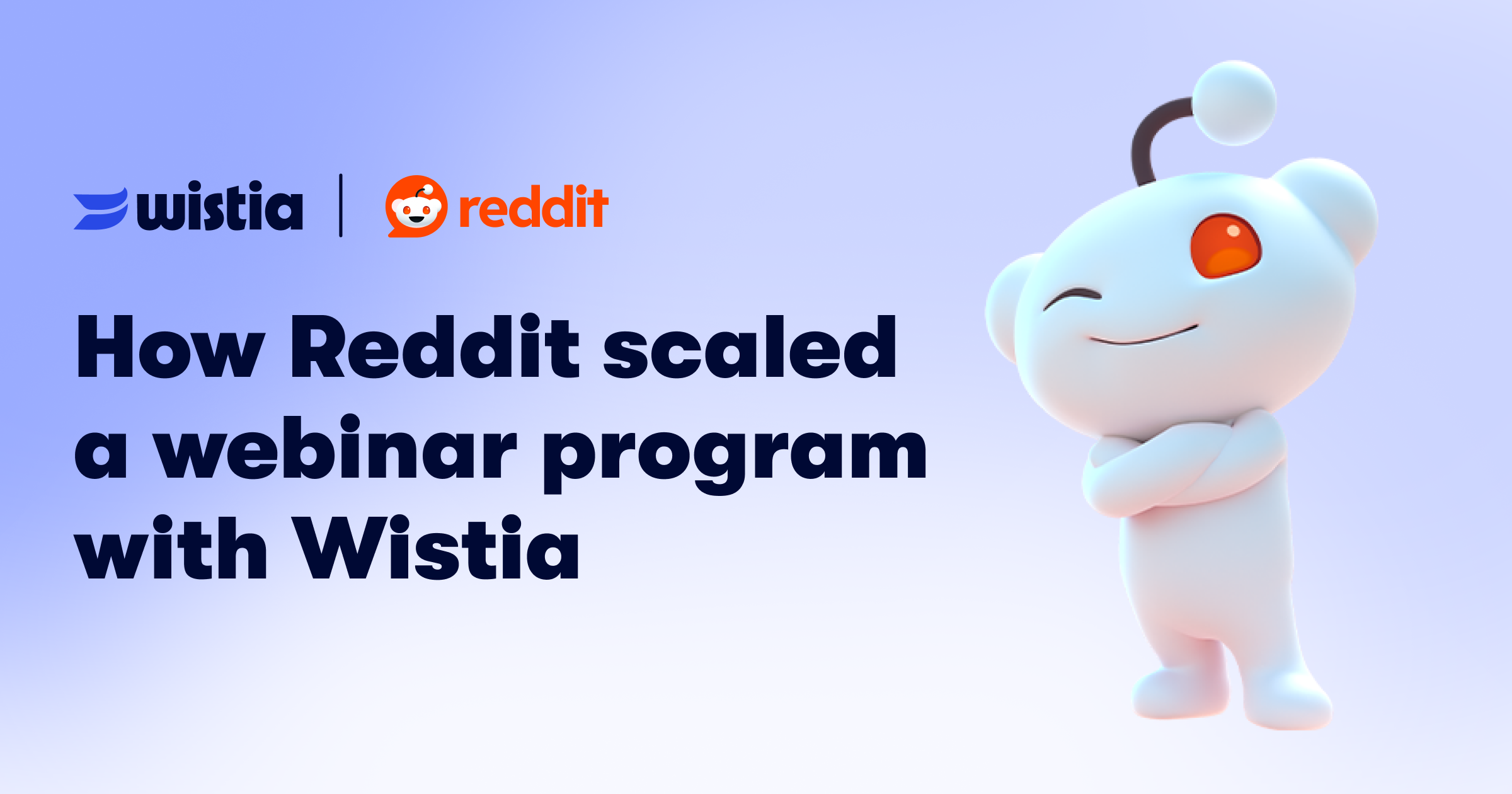12 B2B Brands with Swipe File-Worthy Video Content
November 1, 2021
Topic tags
As a B2B brand, you’ve likely felt the shift to video over the past few years. We’ve certainly felt it here at Wistia. Video uploads to our platform increased by 80% in 2020 — a strong signal that more and more brands are jumping on the video bandwagon.
Though you might know that video is a worthwhile investment, you might be stuck on what types of videos to prioritize or where to get started. If this sounds familiar, you’ve come to the right place.
We’ve compiled a list of a few of our favorite B2B companies with stellar video content. From product videos to educational videos and everything in between, see for yourself how B2B businesses use video to bring their brand to life. Let’s go!
Product videos by ZenDesk and UserTesting
When folks arrive at your website for the first time, how do you quickly tell them what your business is all about? Help people understand the value your product or service offers with a short product video! Take a look at these two examples from UserTesting and Zendesk.
UserTesting is a usability testing and research tools platform. To show how UserTesting can help people get real human insights within just a few hours, its homepage features a product overview video. The 3:30 minute-long video contains a delightful mix of animation, real people, and clips from the platform’s user experience. These elements combine to tell a cohesive brand story. See for yourself!
Another great example of a product video is from Zendesk, an award-winning customer service software. The platform recently added a new customer experience feature called Sunshine. The feature itself can be a bit complicated, so Zendesk created this colorful and engaging video to simplify complexity and tell a compelling narrative about the benefits. Check it out below!
We love Zendesk’s use of eye-catching B-roll footage that helped communicate how Sunshine is used. Instead of only showing off your product in a video, consider taking a creative approach to storytelling like Zendesk.
Customer support videos by Shopify and Zoom
Next, let’s discuss how videos can make a difference in your brand’s customer support experience. How often do you see videos on a website’s help center? We bet not enough, especially when it comes to B2B brands with more complex products and systems.
Here are two examples from Shopify and Zoom that showcase how video helps customers answer their questions in minutes.
Shopify, the e-commerce platform, organizes its Shopify Help Center on its website by topic. It embeds videos on several pages giving folks an “Intro to Shopify,” teaching folks “How to Choose a Payment Provider,” and more. Shopify also directs users to its YouTube channel, The Shopify Help Center, which has 138,000 subscribers and counting. The channel features a playlist called “Getting Started in Shopify,” which covers the fundamentals of getting up and running on the platform.
Likewise, Zoom, the reliable video conferencing platform, has a YouTube channel with a playlist called “How To Zoom,” which gives people quick tips and tutorials for success. Zoom embedded the YouTube videos more prominently in the Help Center of the Zoom website, instructing visitors to “Start watching Zoom product tutorials” to find answers to questions easily.
See how you can go the extra mile to answer your customers' questions by using video? From customer help center videos to improving customer support with video correspondence, there are tons of ways video can enhance your customer experience.
Educational videos by Frame.io and Formlabs
Moving on! Educational content is created to empower and enlighten customers, and video is often the best tool for the job. Whether you invest in webinars, testimonials, live events, or thought leadership content, there are so many opportunities for B2B brands to use educational video content to foster deeper connections with audiences!
One B2B brand that creates stellar case studies of its customers is Frame.io, the cloud-based collaboration platform. Frame.io has an entire library showcasing its video case studies, which helps visitors envision the problems Frame.io could solve for their own business. Here’s an example of Frame.io’s case study on how Refinery29 expanded its video content output with the product.
Are you accustomed to creating lengthy written guides to educate your audience? Formlabs, a manufacturer of powerful and affordable 3D printing technologies for businesses, said, “We’ll give you a video guide instead!” In its video guide for “How to Choose a Desktop 3D Printing Technology,” Formlabs compares different technologies across popular buying considerations.
More businesses could benefit from finding ways to replace traditional educational content with video to enhance their brand impact. All it takes is some creativity and an investment in video — trust us, it’s worth it!
Brand videos by Squarespace and ezCater
Don’t be afraid to use video to show off your brand personality, either! Purely entertaining content can win over your audience and entice them to want to learn more about your company.
Squarespace and ezCater are two examples of B2B businesses that let their personality shine through in these super fun brand videos.
Squarespace, the website building and hosting company, created a brand video that reinforces how its platform helps folks turn any idea they have into a reality. Is your grand idea selling a line of opera-themed soaps (or a soap opera)? Squarespace uses humor and quirkiness to explain how the platform makes marketing and branding possible for any wacky idea imaginable.
Online catering marketplace ezCater also took an outside-of-the-box approach to create a delightful brand video. ezCater’s video hinges on the idea that many folks don’t want to come back to work after being remote for so long during the pandemic. You could install an office water slide to try and convince your team to come back to work. Or, you can order lunch from ezCater!
## HubSpot and Wistia for surprise and delight videos Last but certainly not least, you can use video in creative and surprising ways that will delight prospects and customers. We have two final examples that’ll inspire you to use video to leave a lasting impression on your audience. The first example is from HubSpot, the inbound marketing, sales, and customer service software platform. To communicate that there are no hard feelings after someone unsubscribes from its marketing emails, HubSpot saw an opportunity to make a video for these folks before bidding a final farewell.
And what happens when you submit a “get in touch” request? Well, at Wistia, your confirmation comes in the form of a video that’s sure to make you smile. Before folks hear back from us within one business day, we wanted to give a pep talk educating them about our features in a subtle way. So, we created a Mighty Ducks-themed sales video!
Email unsubscribe videos and sales “get in touch” videos are only two ways to delight your prospects and customers. Think about what other brand touchpoints could benefit from a little video magic!
Go on, get creative and start creating
If there’s anything you should take away from these examples, it’s that every B2B company has room for video somewhere in its marketing funnel. Whether you create a memorable brand video or start sprinkling video content across your social channels, we encourage you to start making more videos for your business. Get out there and give video a try — you never know what kind of inspiration may strike!







Social media videos by MailChimp and InVision
Although video for social isn’t new, many B2B brands still aren’t taking advantage of the power of video on channels like LinkedIn, Facebook, Twitter, and Instagram. The algorithms across most platforms even favor video because of its ability to capture attention and hold it for longer than other types of content.
If you’re not including video in your social media strategy yet, you could be missing out on big brand opportunities to engage your audience! See for yourself how Mailchimp and InVision use social media videos to support their larger marketing campaigns.
When Mailchimp, the marketing automation platform and email marketing service, dropped a batch of new email templates for its customers, it announced this exciting news with a short 19-second video on Twitter. The video previews a few of the new email templates and the opportunities for customizing email campaigns that look and sound like your brand.
Have a new product or feature? Make a video announcement on social media like Mailchimp! Remember — video doesn’t have to be long to make a big impact.
On the other hand, InVision, the digital product design platform, uses social media video to promote its branded podcast Design Better. By featuring an audio clip from Design Better and some text explaining the episode, InVision created a highly visual way to engage potential listeners on LinkedIn.
Videos on social media can be used in an infinite number of ways as one piece of an overall marketing campaign. So what’s stopping you from cooking up a recipe that includes video in your social strategy?